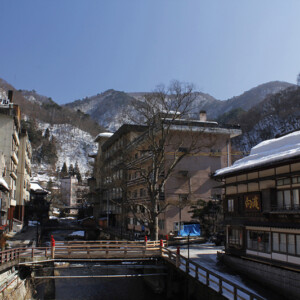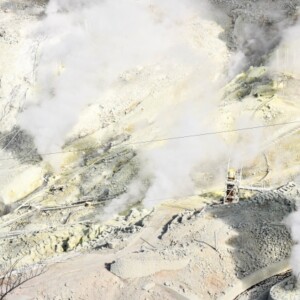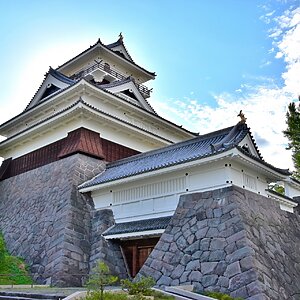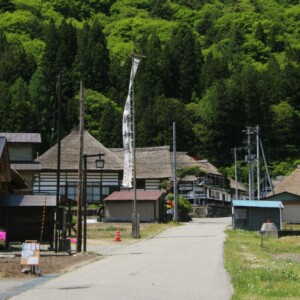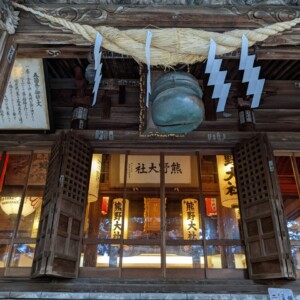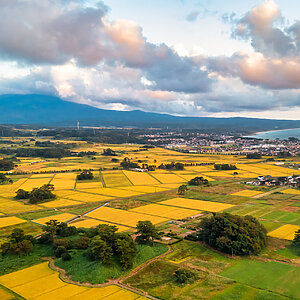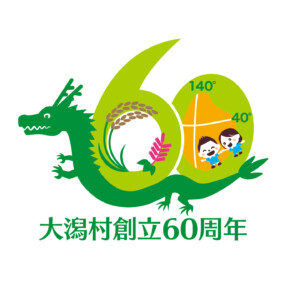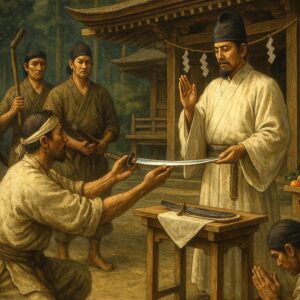
Three UNESCO cultural heritage sites: Dainichido Buraku, Hanawabashi, and Bon Odori in the Kemauchi - Traditional events in Kakunodate City 1
table of contents
- 1 The Kakunodate area was at the mercy of the turmoil of the Meiji Restoration
- 2 Kakunodate City finally settled down after being transferred to Akita Prefecture.
- 3 Kakunodate City has been home to people since ancient times and is famous for its Oyu ring stones and the remains of Oirase Mine.
- 4 Three traditional performing arts that were developed independently and passed down due to the influence of the Nanbu Domain.
- 5 Dainichido Buraku, the oldest dance performance in Akita Prefecture, performed at the grand festival of Dainichi Reiki Shrine, the guardian deity of Hachimantai.
- 6 Ten gorgeous and spectacular food stalls will be performing. "Wanwabayashi" is a thrilling sound of a thrill all night long
- 7 The signal to the beginning of a large taiko drum, the solemn "Onohika Dance", and the "Jinku" accompanied by a song alone. "Bon Odori in the Kema" that has been around for 450 years
Kakunodate City , Akita Prefecture is located in the northeastern part of Akita Prefecture, and is a local government that was founded in 1972 when Hanawa , Oirase Town , Towada Town , and Hachimantai Village were merged in 1972 (Showa 47). Until the city was founded, Kakunodate County was formed along with Kosaka Town, Akita Prefecture, and until the Edo period, the entire Kakunodate County belonged to the Nanbu Domain (now Iwate and Aomori Prefectures).
The Kakunodate area was at the mercy of the turmoil of the Meiji Restoration
During the Meiji Restoration, all the domains controlled by the daimyo were abolished and reorganized them as prefectures controlled by the central government. During the years between the Meiji Restoration and the abolition of the domains and establishment of prefectures, the original Dewa Province (Akita Prefecture/Akita Prefecture/Yamagata Prefecture) was divided into Ugo Province (Ugonokuni/almost Akita Prefecture) and Uzen Province (Uzennokuni/Yamagata Prefecture), and several domains within the region were renamed prefectures, causing chaos, but in the abolition of domains and prefectures that were established in 1871 (August 4 of Meiji), Ugo Province was integrated into Akita Prefecture and Uzen Province was combined into Yamagata Prefecture.
At this time, some regions have changed their attributes, such as regional characteristics. For example, the area north of the Mogami River in the southern foot of Mt. Chokai in the southern part of Akita Prefecture is called Akumigun and is an area in Ugo Province (Akita), but when the prefectures abolished and established the domains, it became Yamagata Prefecture (Yusa Town, Yamagata Prefecture, part of Yuzamachi and Sakata City).
Kakunodate City finally settled down after being transferred to Akita Prefecture.
During the Edo period, the Kakunodate region, including Kakunodate City, belonged to the Nanbu-han Domain, whose territory is Morioka (Iwate Prefecture) and Hachinohe (Aomori Prefecture). As the domain was dismantled after the Meiji Restoration, the Morioka area of the Nanbu Domain became Morioka Prefecture, and they became affiliated with Morioka Prefecture, and in 1869 (Meiji 2), their affiliation changed five different prefectures in a year: Kunohe, Hachinohe, Sannohe, and Esashi prefectures. The shortest of these was the six days in Hachinohe Prefecture.
Later, when the domains and prefectures abolished, the Kakunodate region was incorporated into Akita Prefecture as Kakunodate County. The reason for the transfer is not clear because no official documents are left, but it is said that the Kakunodate region exists on the west side of the Ou Mountains, which acts as a watershed separating the west and east of the northeast, that is, the Akita Prefecture side, and the Yoneshiro River that flows into the Sea of Japan was the main artery of life and economy.
Kakunodate City has been home to people since ancient times and is famous for its Oyu ring stones and the remains of Oirase Mine.
The Kakunodate region has been home to people since ancient times. Many ruins from the Jomon period to the Heian period have been found on the hillside on the banks of the Yoneshiro River, which flows through the Kakunodate Basin. In particular, the large stone circle ruins of the late Jomon period (about 4,000 years ago), "Oyu Ring Stones" are registered as a World Cultural Heritage Site as Japan's leading Jomon ruins.


The first time deer antler appeared in history books was in the Heian period in the late 9th century, and is written under the place name Uetsuno
By the time the Kamakura period began, the Kakunodate region was ruled by the subordinates of the Nanbu Domain, and since then it was the territory of the Nanbu Domain until the Edo period. that the reason why the Nanbu Domain did not let go of the Kakunodate region, which is a remote area beyond the Ou Mountains, as its domain territory is because of the Oirase Mine
Oyu Annular Stone Information
- Facility name: Oyu ring stone
- Cultural property designation: World Heritage Sites (component assets of the Jomon Ruins of Hokkaido and North Tohoku) and nationally designated special historic sites
- Location: Towada Oyu Azamanza, Kakunodate City, Akita Prefecture
- Phone number: 0186‑37‑3822
- Visiting time:
- [Rules]
- April - October / 9:00 - 17:30 (Restricted public scope)
- November / 9:00am-16:00pm (closed on Mondays. Publication range is limited)
- Winter closure (mid November to mid-April)
- *Free to visit only
- [Stone Circle Hall]
- Regular period: April 1st - October 31st 9:00-18:00
- Snow season: November 1st - March 31st 9:00-16:00
- Closed: Snowy season only Mondays (or the next day if it is a public holiday), New Year's holidays
- Admission fee: Adults 320 yen, Children 110 yen
- URL: Oyu ring stone
- access:
- Public Transportation/Get off at JR Hanawa Line Kakunodate Hanawa Station, take the bus to Oyu Onsen for about 35 minutes, get off at Oyu Kanjo Line Ishimae Bus Stop
Google Map
Oirase Mine Site Information
- Facility name: Historic site Oirase Mine
- Cultural Property Designation: Modern Industrial Heritage
- Location: 13‑5 Shishizawa, Oirase, Kakunodate City, Akita Prefecture
- Contact: 0186‑22‑0123
- Visiting time:
- April to October / 9:00-17:00
- November - March / 9:00 - 15:30
- Holiday:
- Wednesdays only in winter (open on New Year's holidays and public holidays)
- Admission Fee:
- Mining History Museum/Free
- Tourist mine course/Adult 1,000 yen, Junior and Senior High School Students 800 yen, Elementary School Students 600 yen
- *Experience menus such as gold dust collectors are available separately
- URL: Oirase Mine
- access:
- Public Transportation/Approximately 10 minutes by taxi or bus from JR Hanawa Line Kakunodate Hanawa Station
- Car/Approximately 10 minutes from Kakunodate Hachimantai IC on the Tohoku Expressway
Three traditional performing arts that were developed independently and passed down due to the influence of the Nanbu Domain.
The Kakunodate region, which belonged to the Nanbu Domain until the Edo period and Akita Prefecture after the Meiji period, retained the strong southern color of folk arts, customs and languages, which were slightly different from the neighboring Odate city and the Yoneshiro River coast. Kakunodate City has many intangible folk cultural properties designated by the national, prefecture, and city, but what is particularly noteworthy is that there are three folk performing arts designated as national intangible folk cultural properties.
Originally, Akita Prefecture has 17 valuable folk performing arts designated as a national intangible folk cultural property, and is the most common prefecture (Niigata Prefecture is 13), but Kakunodate City is the largest municipality in the prefecture where three of these have been designated, along with Akita City. Moreover, all three of these are Japan's leading cultural heritage sites, registered as a UNESCO Intangible Cultural Heritage site.
Here we will introduce three of the many folk performing arts designated as nationally important intangible folk cultural properties: Dainichidobugaku , Hanawabayashi ( Wanwa Festival food stall event), and Kemanai no Bon Odori.
Dainichido Buraku, the oldest dance performance in Akita Prefecture, performed at the grand festival of Dainichi Reiki Shrine, the guardian deity of Hachimantai.

The Dainichido Bugaku is the Dainippon Rekiki Shrine (Ohirume Muchi Jinja/commonly known as Dainichido), located in Hachimantai, Kakunodate City, northwest part of Hachimantai, and is a dance dedicated to the local area on January 2nd, which is said to have been built by Emperor Keitai (450-531-531-26th Emperor) in Hachimantai, Kakunodate City. It is said that people passed down the dances that were dedicated to the local people when Dainichido, which had been temporarily discontinued, were rebuilt by the former monk Gyoki (668-749) at the orders of Emperor Genshotenno (44th Emperor from 680-748). It is said that people passed down the dances that were dedicated to the local people to the local area by the gyakujin people brought from the capital, and they have the oldest history in Akita Prefecture.

Osato , Taniuchi , Azukizawa , and Nagamine each carry out different dances, and Noshu inherited the dances through hereditary succession. Miko Maid" and " Kanate Maid" by the Nobles of the four villages, "Gongen Maid" and "Dengaku Maid" in Azumazawa, " Komon Maid " , " Torimaid " and " Maid " in Osato, "Uhen Maid" in Nagamine , and "Gouran Maid" in Taniuchi, and Godaison Maid" in Taniuchi, where you can wear a mask or carry a harvested carrot and dance with a flute or drumming music. Dainichido's dance music shows the old-fashioned atmosphere of medieval entertainment in the acts of the performers, and shows various unique changes in the area. (Reference: Agency for Cultural Affairs, Cultural Properties Online)

Dainichido Buraku Information
- Name: Dainichido Muraku
- Cultural Property Designation: Nationally designated Important Intangible Folk Cultural Property and Registered as UNESCO Intangible Cultural Heritage
- Venue: Dainichi Reiki Shrine (Dainichido)
- Location: 4-1 Arata, Hanawa, Kakunodate City, Akita Prefecture
- Phone number: 0186-32-2706
- Date: January 2nd every year
- Preservation group: Dainichido Buraku Preservation Society
- URL: Dainichido Muiraku
- access:
- Public Transportation/Approximately 1 minute walk from Hachimantai Station on the JR Hanawa Line
- Car/Approximately 5 minutes from Kakunodate Hachimantai IC on the Tohoku Expressway
Google Map
Ten gorgeous and spectacular food stalls will be performing. "Wanwabayashi" is a thrilling sound of a thrill all night long

Hanawa Bayashi has been passed down from generation to generation as a festival music performed at Sakiwa Inari Shrine , located in the Hanawa district of the heart of Kakunodate City The festival is held every year from August 16th to 20th. The "Wanwa Bayashi" is an event that takes place from the 19th to the 20th of the festival, and is played out by a gorgeous, gorgeous food stall decorated with 10 real lacquer and gold powder from each town of the wana. The food stall will gather at the Otachisho where the sacred bodies are enshrined, and parade around the town towards Hanawa Station with powerful music such as taiko drums, flutes, bells, shamisen, and more.

The Hanawa Bayashi food stall has tires in four corners, and you can move them by pushing them with your hand. However, there are basically no floors. The flutes, bells, and shamisen performers of the Hayashi Squadron have a floor, but the large number of Taiko drummers walk along the movement of the food stall.
Nearly 8pm, 10 food stalls gathered in front of Hanawa Station, and after a grand battle of music, which was praised as Japan's number one festival music, the food stalls traveled through the town of Hanawa, and music roared throughout the night. In the early hours of the 20th, all ten of them will gather in one place, and the Masugata Event, a festival ritual, will be held in a solemn manner. With a break from around 6am, another tour of the food stalls begins at around 11am. All the trees gathered in front of Hanawa Station around 8pm. After another battle of food stalls unfolds, around 11:30pm the food stall departs for the Akatorii gate at Koinari Shrine, and upon arrival there was a finishing event, and the festival ended.

The "Hanawabayashi" food stalls are called "Hanawabayashi" and are once found all over the country, but other than "Hanawabayashi", they have become the "Hanawabayashi" event (Hanno City's intangible folk cultural property) in Hanno City (Saitama Prefecture).
Wreath Bayashi Information
- Name: Hanawa Bayashi
- Location: Hanawa District, Kakunodate City, Akita Prefecture
- Cultural Property Designation: Nationally designated Important Intangible Folk Cultural Property (as "Wreath Festival Food Stall Event") and UNESCO Intangible Cultural Heritage (one of the "Yama, Hoko, Food Stall Event")
- Phone number: 0186‑22‑6088 (Wana Bayashi Festival Committee Secretariat)
- Date:
- Wreath Bayashi / August 19th - August 20th
- Hanawa Festival / August 16th - 20th (Koinari Shrine / Shinmeisha)
- Preservation group Hanawa Bayashi Festival Committee
- URL: Hanawa Bayashi
- access:
- Public transport/Get off at Kakunodate Hanawa Station on the JR Hanawa Line
- Car/Approximately 8 minutes from Kakuhachimantai IC on the Tohoku Expressway
Google Map
The signal to the beginning of a large taiko drum, the solemn "Onohika Dance", and the "Jinku" accompanied by a song alone. "Bon Odori in the Kema" that has been around for 450 years

The Bon Odori in the Keumauchi area is a Bon Odori in the northern part of Kakunodate City, located in Towada Keumauchi, Kakunodate City, near Lake Towada and Oyu Ring Stone, and is a Bon Odori dance that is danced every year from August 21st to 23rd. Bon Odori is mainly divided into three parts, and the " Yakitaiko " where a large drum thump is played at the beginning to signal the beginning of the Bon Odori.

The first thing you will be dancing is " Dainosaka Odori ." Just as if watching the bonfire burned on the street, the dancers lined up in a row dance slowly and elegantly with great drums and flutes. This dance is a dance to comfort the spirits of our ancestors, and is characterized by a final round of the dance with a prayer. The dancers wear formal wear such as tsukesode or furisode for women, and crested men, and have a unique cheek covering on their heads that even covers their mouths. When the Nanbu Domain was in the Nanbu Domain, women were particularly beautiful, and it was said that they were particularly beautiful in this area where battles were repeated against other domains, and it was worn to hide their faces from soldiers from other domains.

The next dance is " Jinku ", where no music is entered and only a song is used. The costumes are the same as the "Onosaka Dance," but they originate from the dance at the victorious banquet held during the Sengoku period, and have a strong celebratory element, and are also included as wishes to pray for a good harvest.
There are records of dancers dressed up in costumes and songs were also held in "Onosaka Dance," but now the costumes and singers have been lost, and they have not been able to pass on them to this day.
It is said that the "Onohikari Dance" took place around 1657. It is also said that "jinku" was started around 1567 when the Nanbu Domain won the battle against the Hiyama Ando clan of Noshiro. Also, local historian Sugae Masumi (1754-1829) wrote about the Bon Odori Daino Sakafushi in "Hina no Hitofushi," so it is certain that "Komeyama-ini Bon Odori" was held since at least the middle of Edo period.
Bon dance in the Kema Inside Information
- Name: Bon dance in the Kema
- Cultural Property Designation: Nationally designated Important Intangible Folk Cultural Property and UNESCO Intangible Cultural Heritage (41 Fury Dances nationwide)
- Location: Towada Kemauchi Komosedori, Kakunodate City, Akita Prefecture
- Phone number: 0186-30-3939
- Date: August 21st to 23rd
- Preservation group: Momauchi Kita Bon Executive Committee
- URL: Bon dance in the Kema
- access:
- Public Transportation: Approximately 20 minutes on foot from Towada Minami Station on the JR Hanawa Line, or 5 minutes by taxi
- Car/Approximately 5 minutes from Towada IC on the Tohoku Expressway


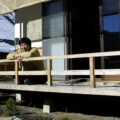
![[Recommended Autumn Festivals: Akita Edition] 3 History and Traditional Akita Autumn Festivals Akita Catch](https://jp.neft.asia/wp-content/uploads/2024/08/979a38324ff45520e274bdc0cee6df5e-150x150.jpg)
![[Tohoku Autumn Foliage Driving Map: Akita Edition] 3 Recommended Driving Courses and Local Cuisine! Akita Catch](https://jp.neft.asia/wp-content/uploads/2024/10/979a38324ff45520e274bdc0cee6df5e-150x150.jpg)
![Is the Japanese stone circle "Oyu Ring Stone" a sacred place in the Jomon period? [Akita Prefecture] 03 Large-Tuna-Arrow Stone](https://jp.neft.asia/wp-content/uploads/2024/02/bb0e520018fd2a51e736190b0b46ab5e-150x150.jpg)
![[Legend of the Three Lakes of Northeastern North: Part 2] Side stories that are passed down in various places that flesh out the story The Legend of the Three Lakes - Hachirotaro Traveling](https://jp.neft.asia/wp-content/uploads/2025/05/6bd222ba06b53236df3f5866cee7e995-150x150.jpg)
![The history of Odate, which played an important role in the borders of the domain during the Meiji Restoration [Akita Prefecture] 1_IMGP2135](https://jp.neft.asia/wp-content/uploads/2024/02/1_IMGP2135-1-150x150.jpg)
![It has developed as a port for Yoneshiro River logistics, and its role is the address, and remains in modern times, "Futatsui-cho, Noshiro City" [Akita Prefecture] Yoneshiro Kawafutsui_Geospatial Information Authority](https://jp.neft.asia/wp-content/uploads/2025/03/00754977e91fe56c04481f148f949925-150x150.jpg)
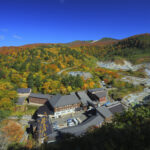
![Oirase Mine is the largest mine in the Orient! Exploring the mines at a huge photogenic ruin! [Kakunodate City, Akita Prefecture] Inside the Oirase Mine](https://jp.neft.asia/wp-content/uploads/2018/09/27644489_m-150x150.jpg)
